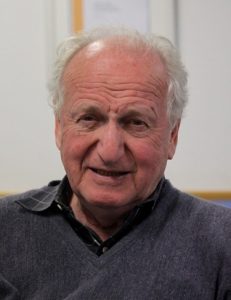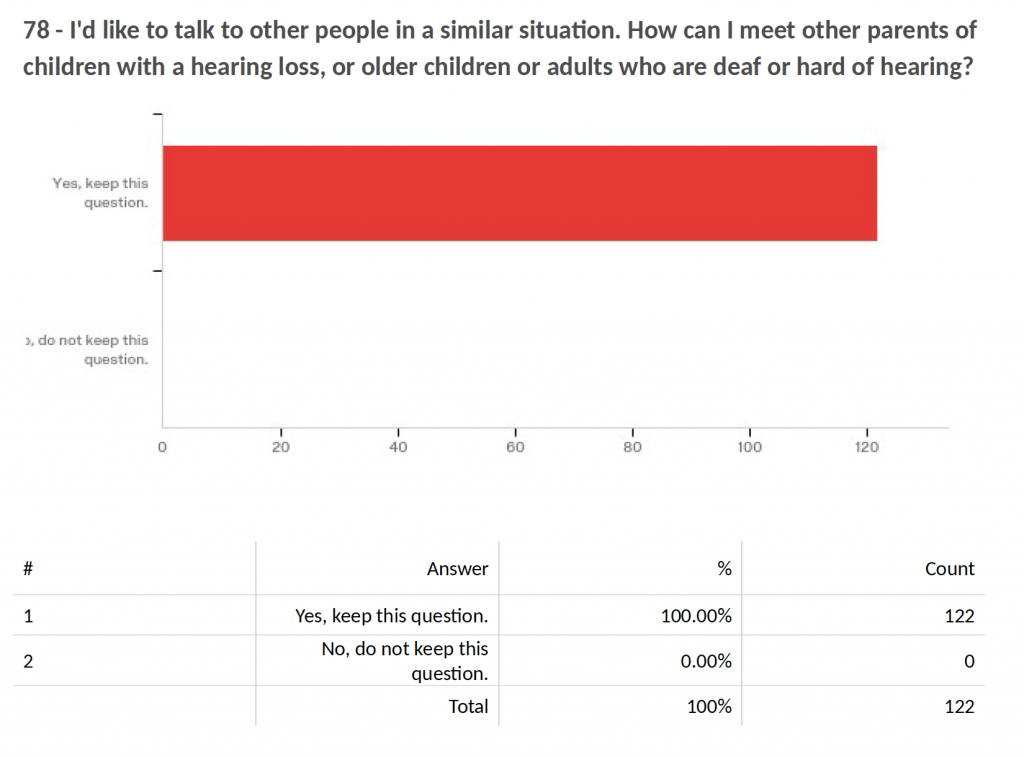
Kris English, PhD
Professor Emeritus
The University of Akron
“Nothing About Me Without Me”
For more than 20 years, patient-centered care (PCC) has been defined by the slogan “Nothing about me without me” (Quinlan, 2018). These five words represent years of effort by a grass-roots movement that demanded an end to a “doctor knows best” culture and the establishment of an informed and participatory role for patients.
The Institute of Medicine (2001) has defined patient-centeredness as “Care that is respectful and responsive to individual patient preferences, needs and values, ensuring patient values guide all clinical decisions” (p. 3) Patient preferences, patient values: we can usually glean these perspectives during our intake consultations, but how do we use them to guide clinical decisions? This question brings us to a feature of PCC called shared decision-making, defined as “the conversation that happens between a patient and their healthcare professional to reach a health care choice together.” These conversations require advanced counseling skills: active listening, empathy, respect for patient autonomy, a willingness to share control, the ability to find common ground.
Not Yet a Practice Norm in Audiology
Based on our literature to date, shared decision-making (SDM) is almost an orphan topic, although a few tools – decision aids – have been developed to guide balanced discussions through hearing care options and choices (e.g., Laplante-Lévesque et al., 2010; Pryce et al., 2018). While the profession continues to explore SDM, we need to appreciate now how this process can drastically change our clinical conversations.
On the surface, SDM seems straightforward. As described by Alston et al. (2014):
- The clinician shares information with the patient about test results and treatment options
- The patient explores and shares with the clinician his/her preferences regarding these options, and
- After discussion, clinician and patient reach a mutual decision about subsequent treatment.
 This template assumes the clinician welcomes and supports SDM. Unfortunately, our available evidence suggests this assumption is not a given (e.g., Ekberg et al, 2015; Grenness et al., 2015). Our limited research has also only focused on decisions related to hearing aid acceptance and options. However, there are other SDM opportunities in an audiology appointment, and these could be easily overlooked.
This template assumes the clinician welcomes and supports SDM. Unfortunately, our available evidence suggests this assumption is not a given (e.g., Ekberg et al, 2015; Grenness et al., 2015). Our limited research has also only focused on decisions related to hearing aid acceptance and options. However, there are other SDM opportunities in an audiology appointment, and these could be easily overlooked.
Example: SDM and HA Orientation
Consider the moment when hearing aids are first fitted. If only from habit, our interactions could disregard patients as decision-makers and rely on directives and advice-giving. For example:
| Standard Instructions? | Shared Decision-Making (SDM) |
| You will need to wear these new hearing aids at home and every other possible environment before your next appointment. | Our best practices recommend listening with hearing aids as much possible. What would that look like for you? Are there specific situations you’d like to start with? What would be a manageable target of hours of use per day? |
| It’s normal to dislike the sound of your voice, but you will get used to it. | Let’s start by giving it a little time. How many days would you like to try to get comfortable with your voice? After that trial period, call or email and let me know how you’re doing. |
| You’ll realize that what you thought was “people mumbling” is really your hearing impairment. | Earlier you mentioned “people mumbling.” Are you interested in testing those impressions? It’d help me confirm if these devices are helping. Your observations would be invaluable. |
| You will still have problems in noise. It’s unavoidable. | It’s quiet here now, but let’s anticipate noisy situations. What might those be in your life? …I have some brochures on easy communication strategies. If they fit your situation and you have an opportunity to try them out, let’s talk about it next time. |
 A student exercise: How do these comments differ? How might a patient respond/react to each, and why? What counseling/communication skills do you recognize? These essays provide some relevant background:
A student exercise: How do these comments differ? How might a patient respond/react to each, and why? What counseling/communication skills do you recognize? These essays provide some relevant background:
- Audiology counseling and patient-centered care, Part 4/5: Common ground
- From person-centered moments to person-centered culture
- Counseling thyself: “Did I really say that?”
- Balancing power in patient relationships
Conclusion
The point of the slogan “Nothing about me without me” is to include the patient in every decision, not just the obvious one (for audiology) regarding amplification. Ultimately, each patient is “an autonomous decision-maker” (Pryce et al., 2018, p. 638); if patients do not participate in hearing aid management decisions, they may decide to do nothing. Even without decision aids, we can use counseling skills to develop shared decisions now.
Acknowledgement: My appreciation to Ida Institute for sharing helpful materials.
References
Ekberg, K., Grenness, C., & Hickson, L. (2015). Addressing patients’ social concerns regarding hearing aids within audiology appointments for older adults. American Journal of Audiology, 23, 337-350.
Grenness, C., Hickson, L., Laplante-Lévesque, A., Meyer, C., & Davidson, B. (2015). The nature of communication throughout diagnosis and management planning in initial audiologic rehabilitation consultations. Journal of American Academy of Audiology, 26(1), 36-50.
Laplante-Lévesque, A. et al. (2010). Factors influencing rehabilitation decisions of adults with acquired hearing impairment. International Journal of Audiology, 49, 497-507.
Pryce H. et al. (2018). Shared decision-making in tinnitus care – An exploration of clinical encounters. British Journal of Health Psychology, 23, 630-645.
Quinlan, C. (2018, April 25). “Nothing about me without me”—20 years later. Retrieved May 12, 2019.

 David Luterman, D.Ed.
David Luterman, D.Ed.
 In emotion based counseling, clients’ primary need is to be listened to non-judgmentally, not made to feel better. This is a hard concept for professionals to acquire, as our assumed mandate is to fix, and in the personal adjustment realm the fix is not apparent. Our clients are not emotionally disturbed; they are emotionally upset, which is appropriate to their life situation. The conventional response to someone who is upset is to try to make them feel better. The two favorite strategies are to instill hope (“Cochlear implants will make him normal”) or use positive comparisons (“It could be worse. He could have cancer, be deafer, etc.”).
In emotion based counseling, clients’ primary need is to be listened to non-judgmentally, not made to feel better. This is a hard concept for professionals to acquire, as our assumed mandate is to fix, and in the personal adjustment realm the fix is not apparent. Our clients are not emotionally disturbed; they are emotionally upset, which is appropriate to their life situation. The conventional response to someone who is upset is to try to make them feel better. The two favorite strategies are to instill hope (“Cochlear implants will make him normal”) or use positive comparisons (“It could be worse. He could have cancer, be deafer, etc.”).
 should we “go there?” We may think that talking about it will increase a patient’s self-stigma, yet if we don’t talk about it, we can be fairly sure it will not resolve on its own.
should we “go there?” We may think that talking about it will increase a patient’s self-stigma, yet if we don’t talk about it, we can be fairly sure it will not resolve on its own.
 John Greer Clark, PhD
John Greer Clark, PhD seems to lose things a lot. His glasses… keys… his watch the other day. We all lose things, but this just seems to be so much more frequent than before. And last week he called me from the grocery parking lot. He said he wasn’t sure if home was to the left or the right from the store. We downsized four years ago and it used to be a right turn out of the lot, but now it’s a left turn. We haven’t really talked to anyone about this. Not yet, anyway.”
seems to lose things a lot. His glasses… keys… his watch the other day. We all lose things, but this just seems to be so much more frequent than before. And last week he called me from the grocery parking lot. He said he wasn’t sure if home was to the left or the right from the store. We downsized four years ago and it used to be a right turn out of the lot, but now it’s a left turn. We haven’t really talked to anyone about this. Not yet, anyway.”
 impersonal reassurances, we inadvertently distance ourselves from our patient. We convey access to some special knowledge, that we know more about the situation than the person experiencing it. Such distance-creating signals are inconsistent with what Carl Rogers (1979) called “the subordination of self.”
impersonal reassurances, we inadvertently distance ourselves from our patient. We convey access to some special knowledge, that we know more about the situation than the person experiencing it. Such distance-creating signals are inconsistent with what Carl Rogers (1979) called “the subordination of self.” 




 Paul Peryman, MA, Dipl Aud (Melb), MNZAS-CCC, Audiologist
Paul Peryman, MA, Dipl Aud (Melb), MNZAS-CCC, Audiologist


